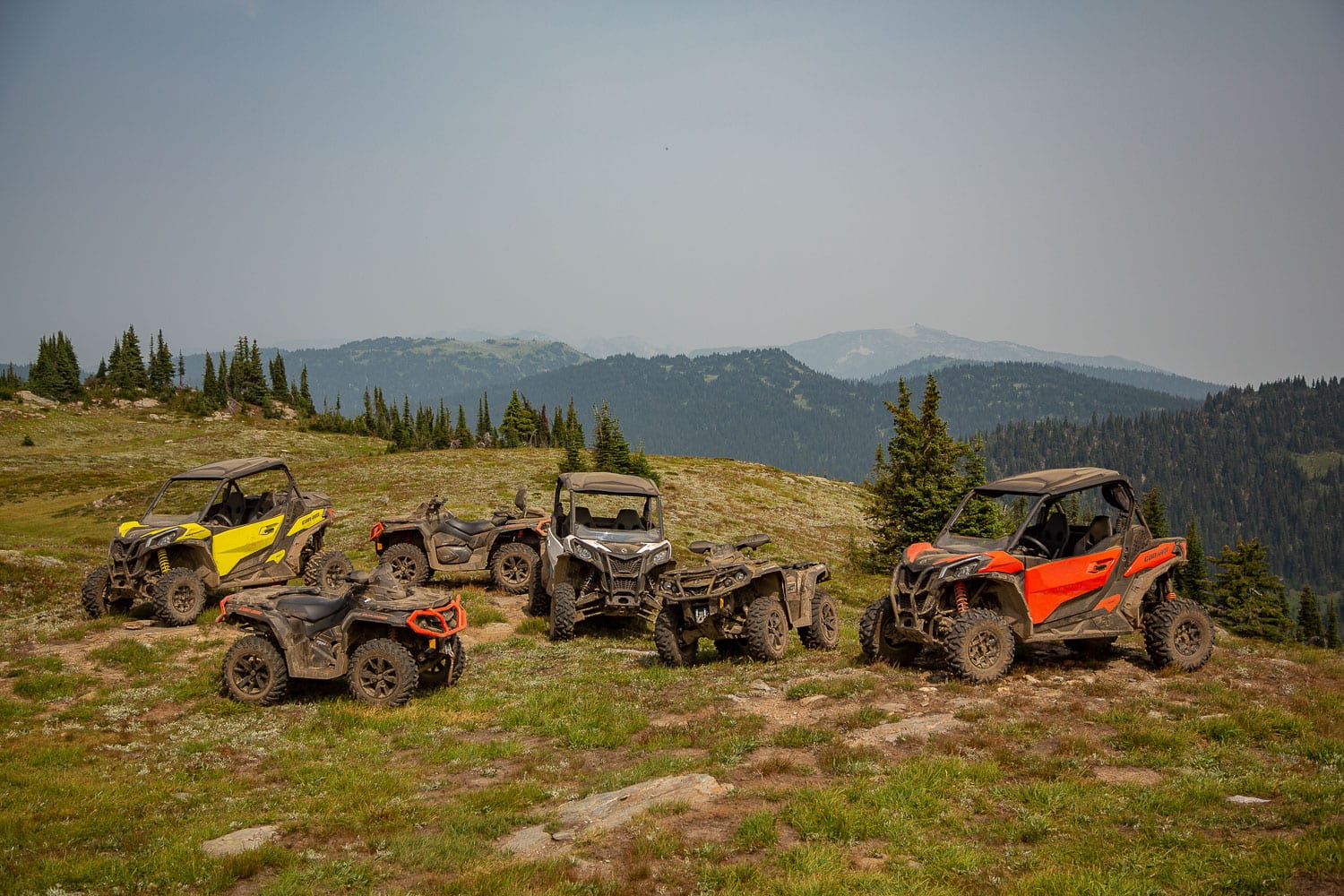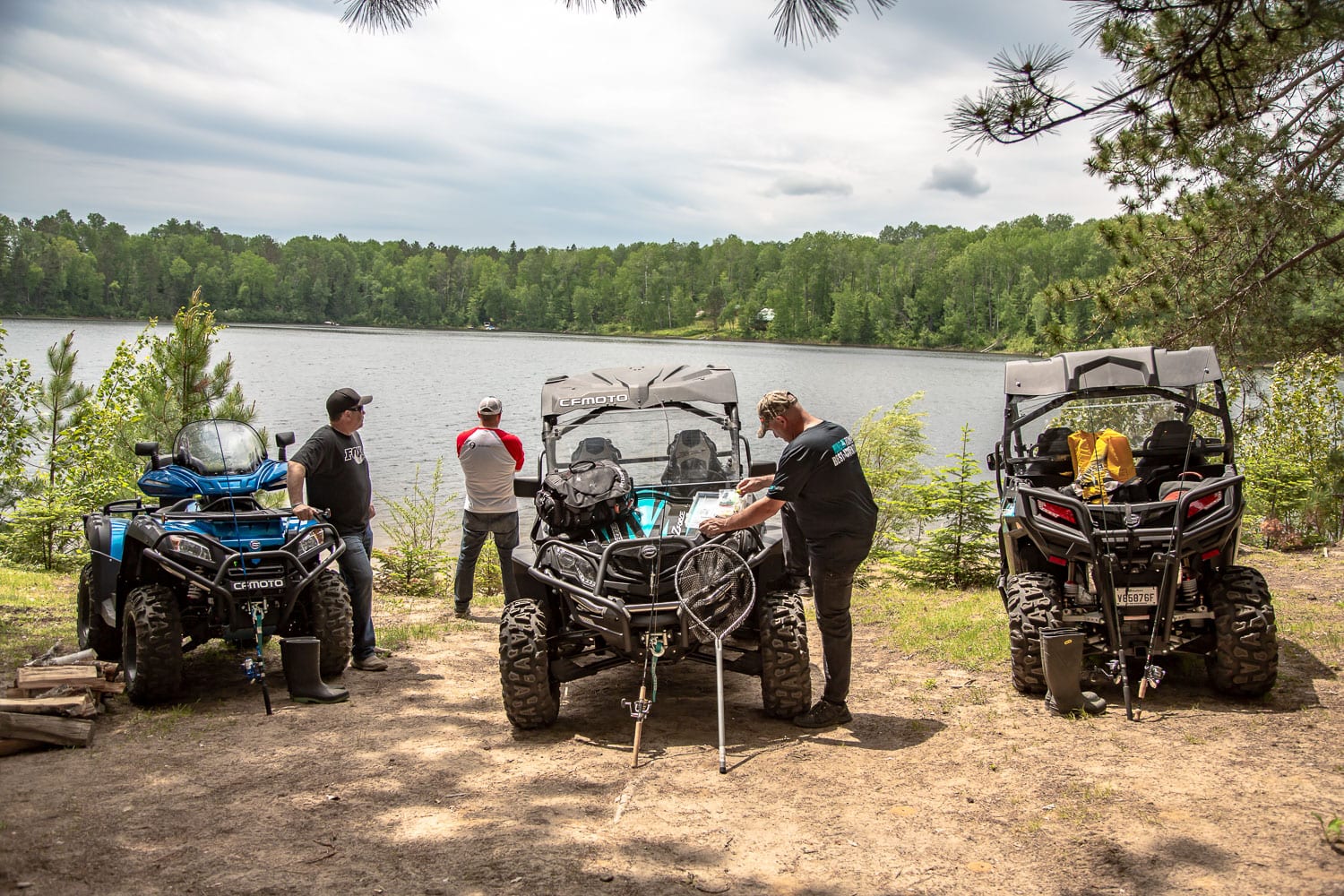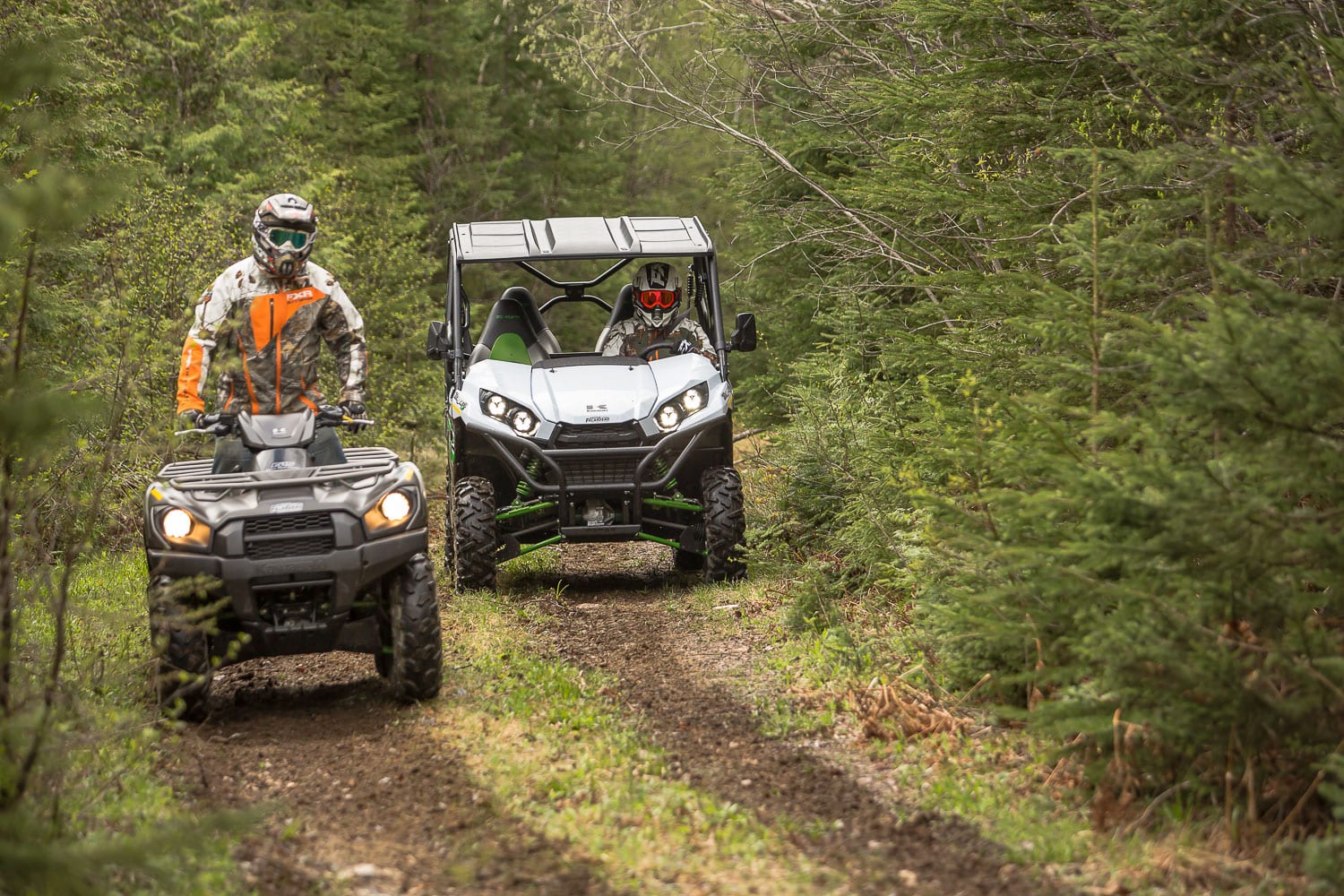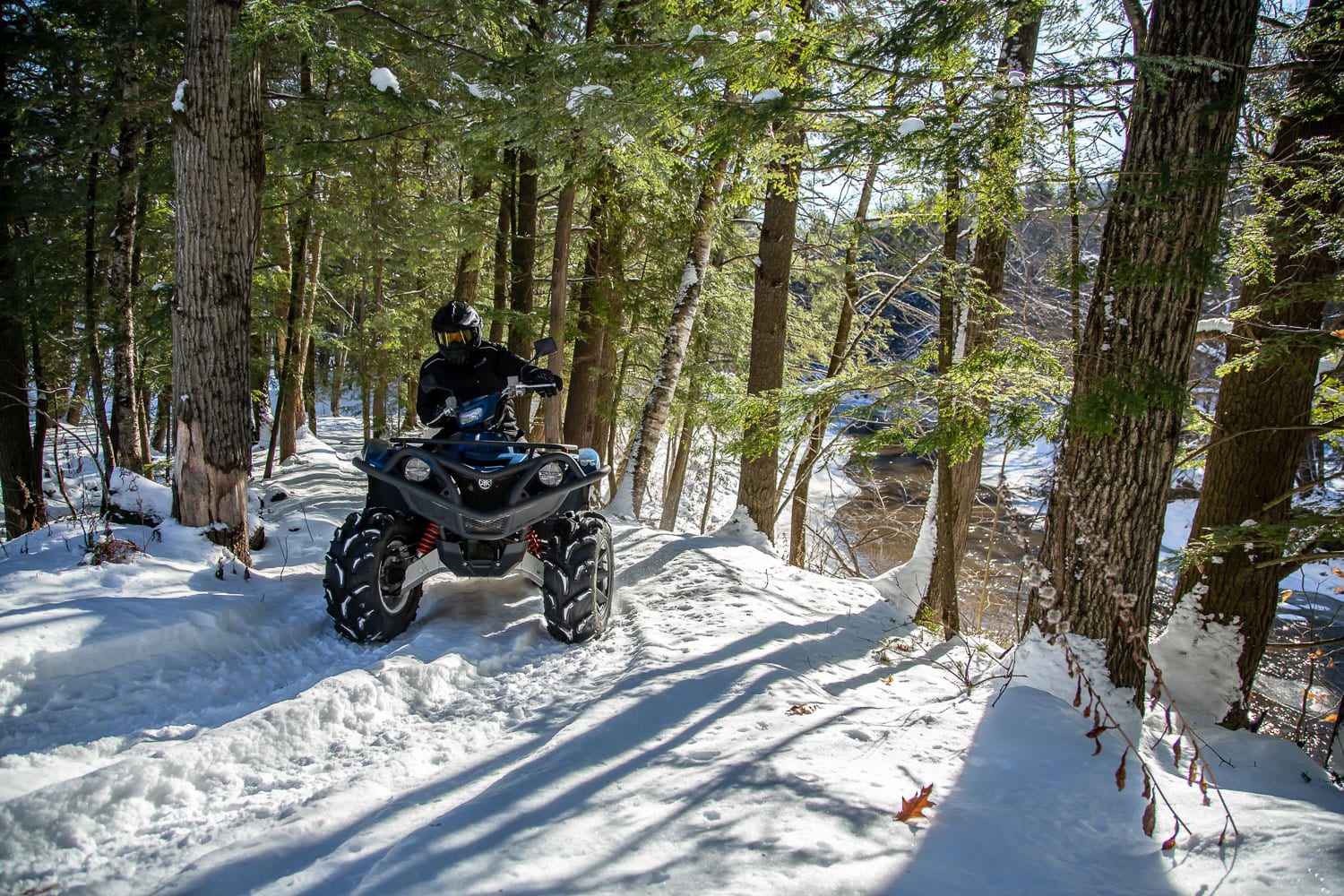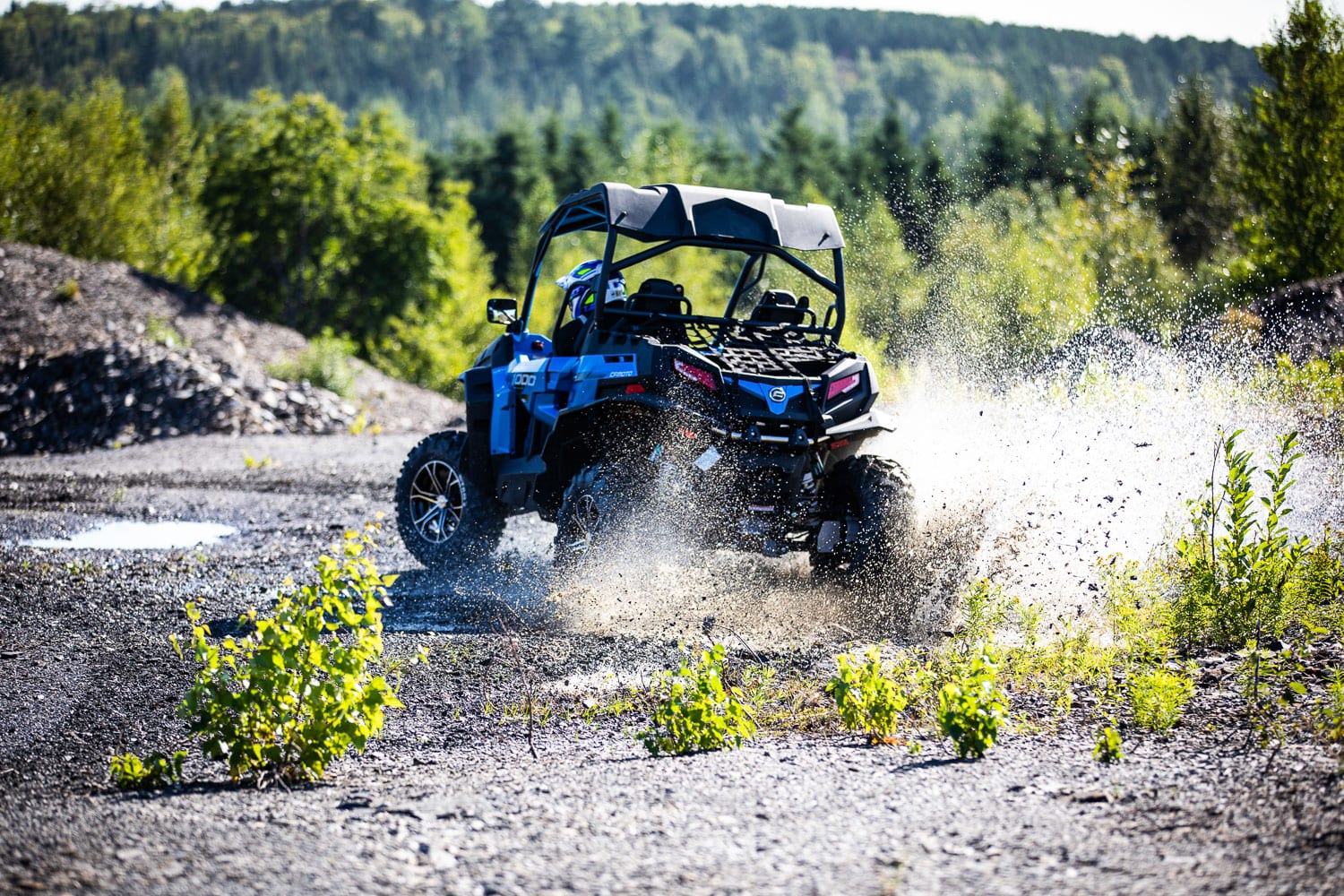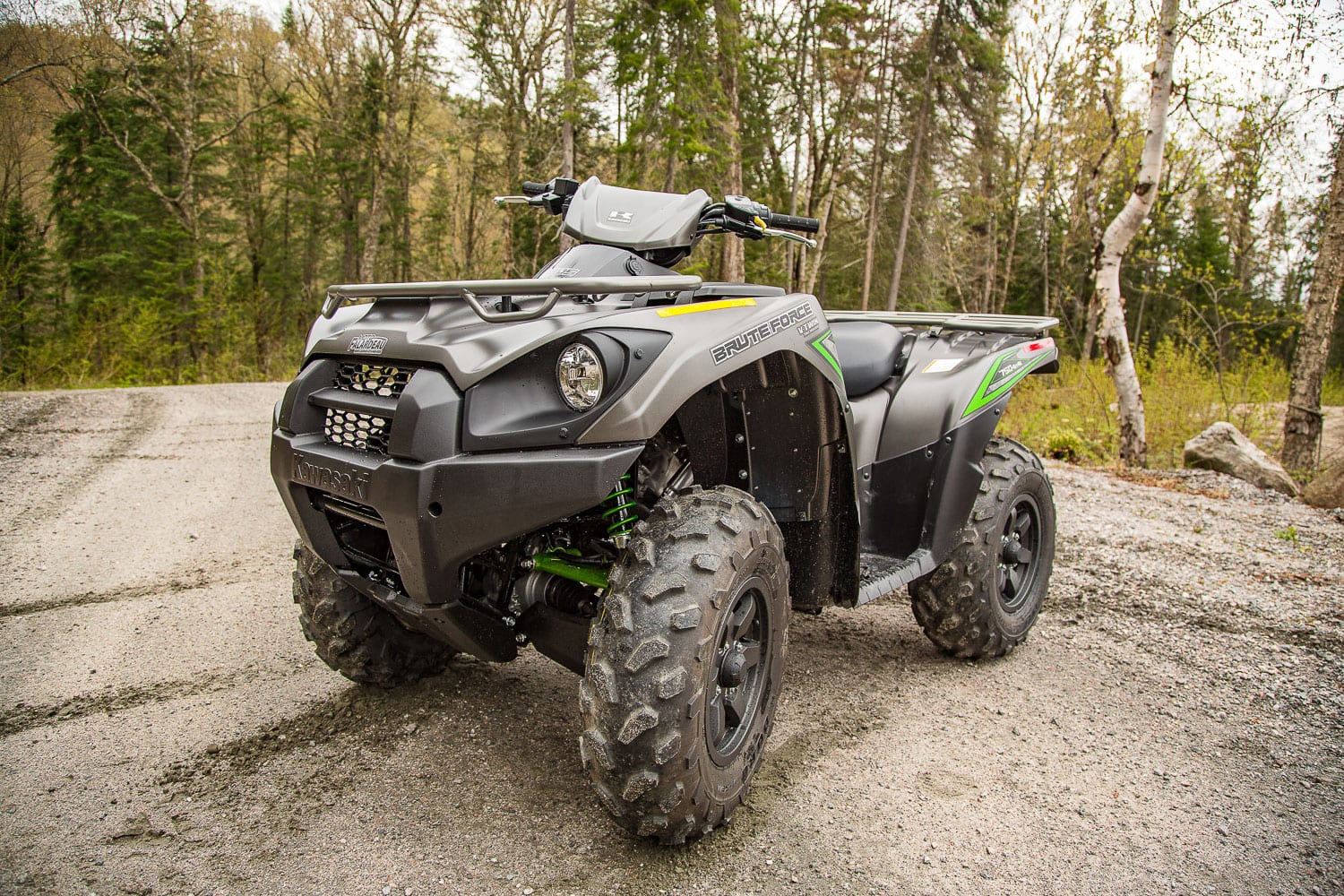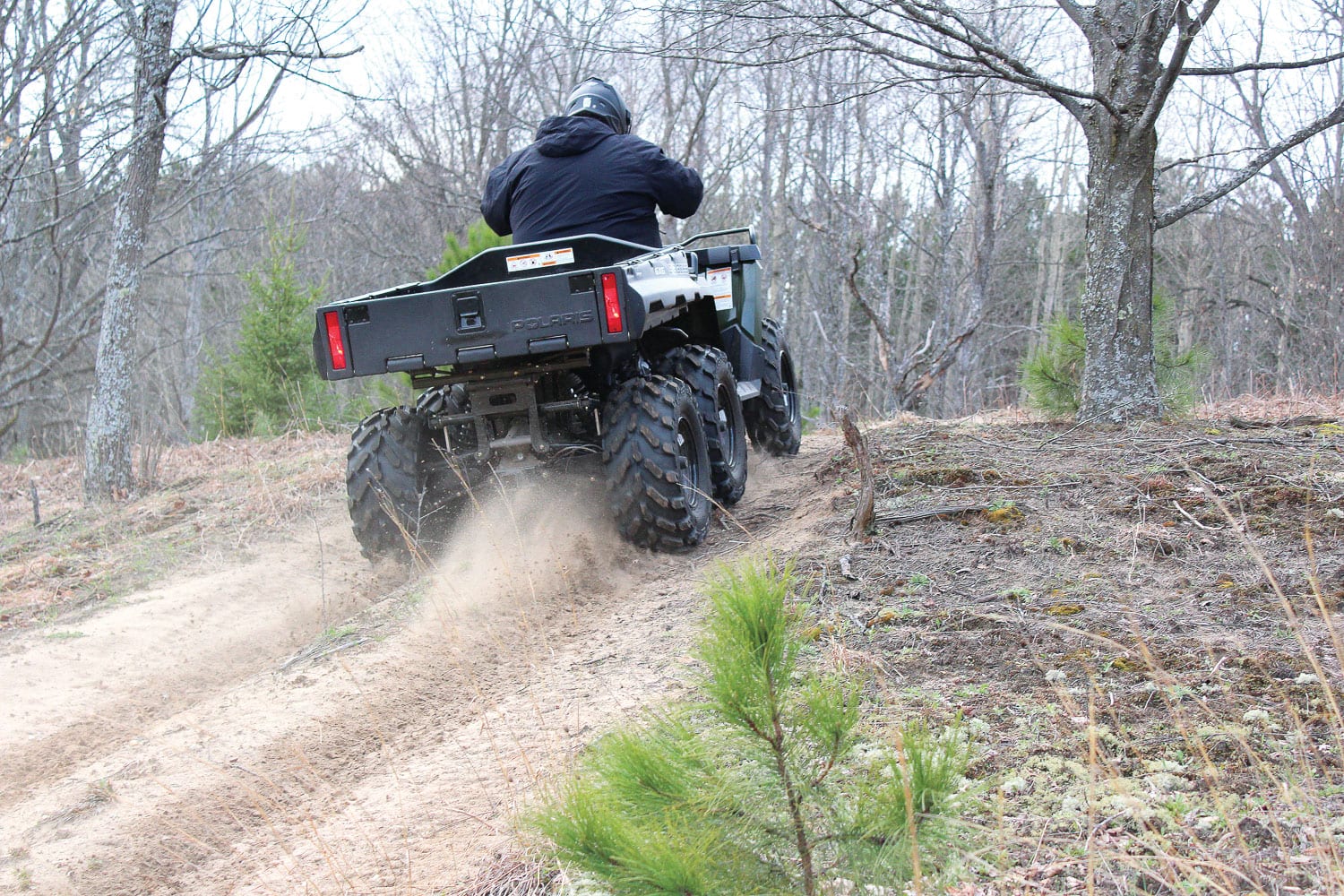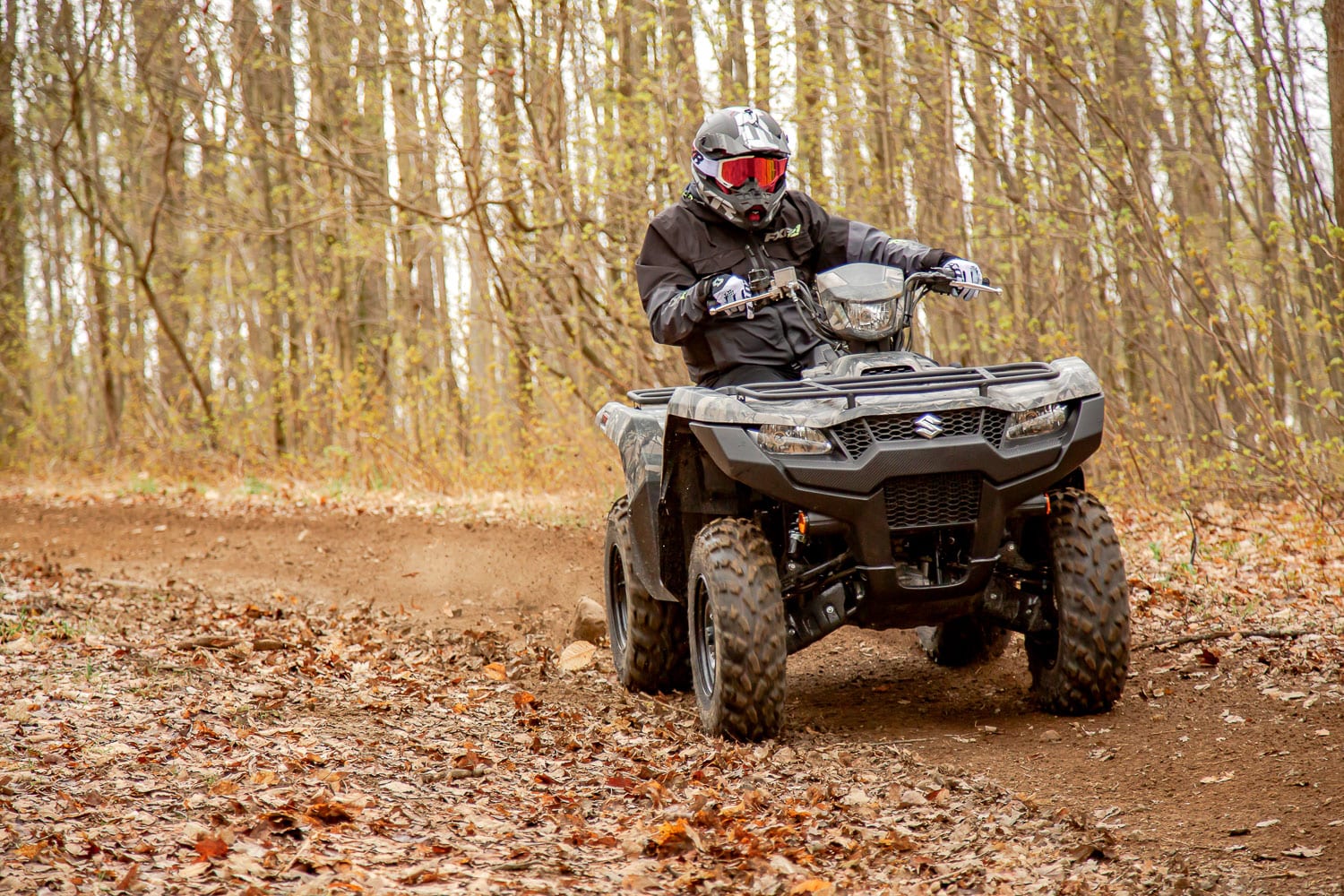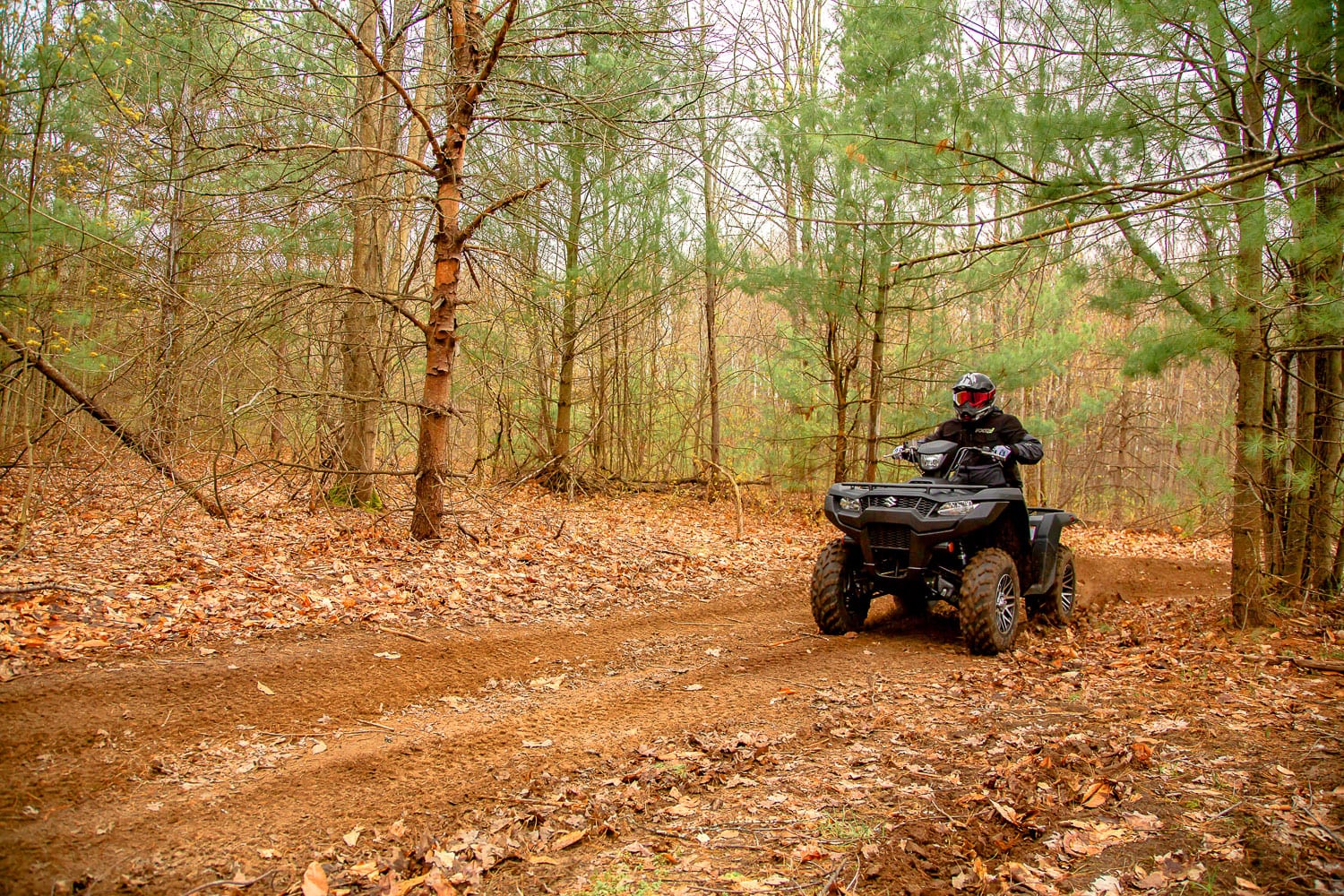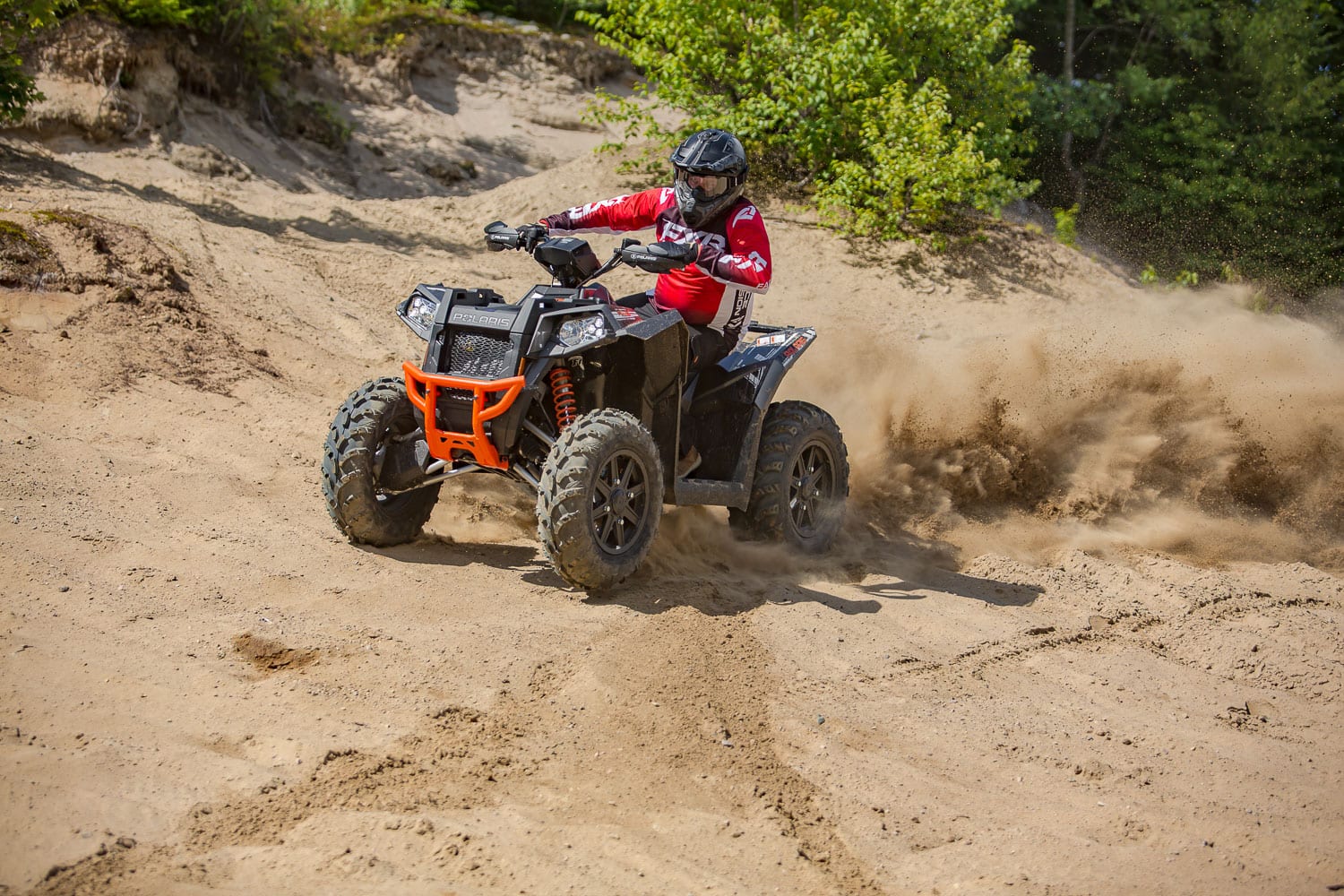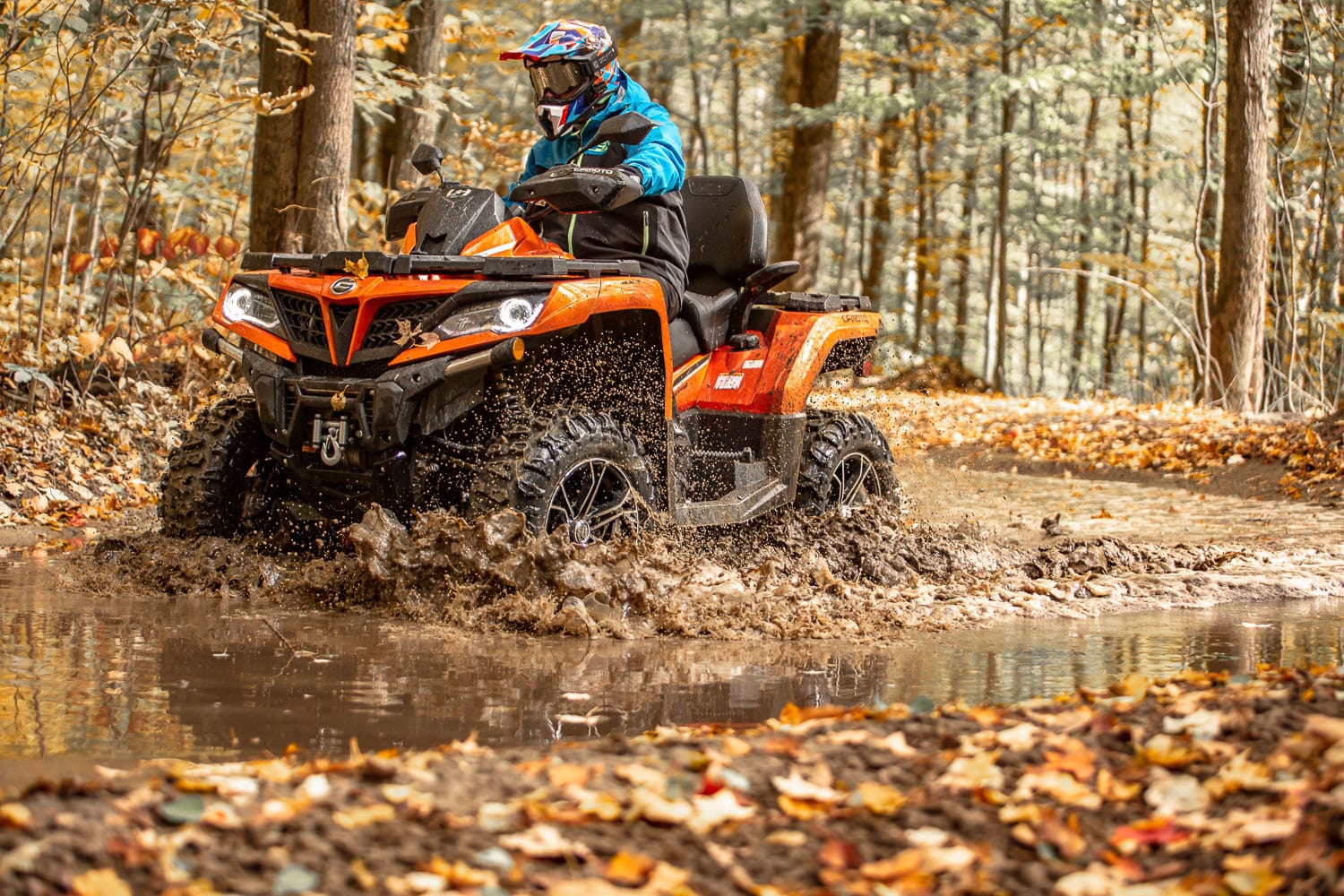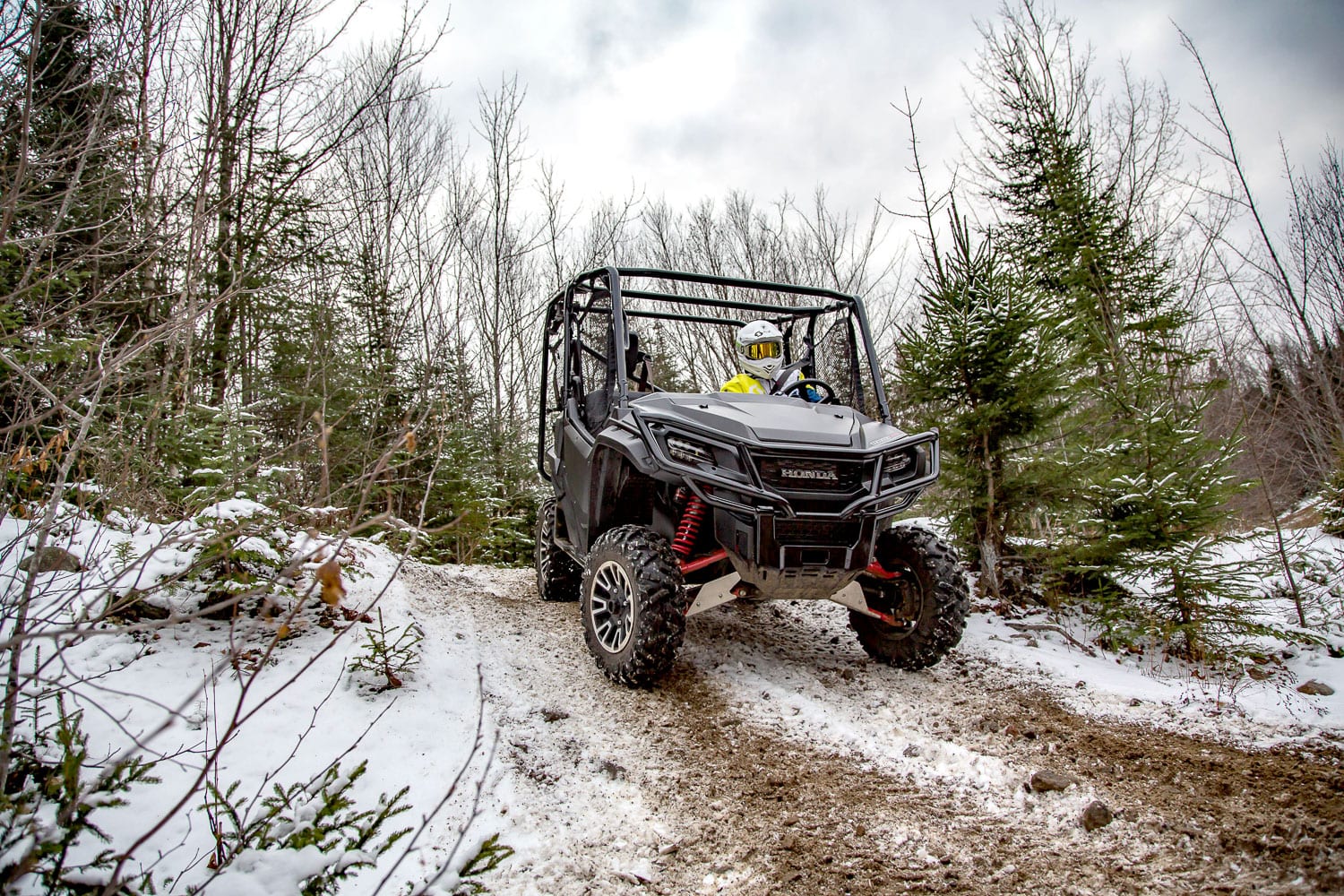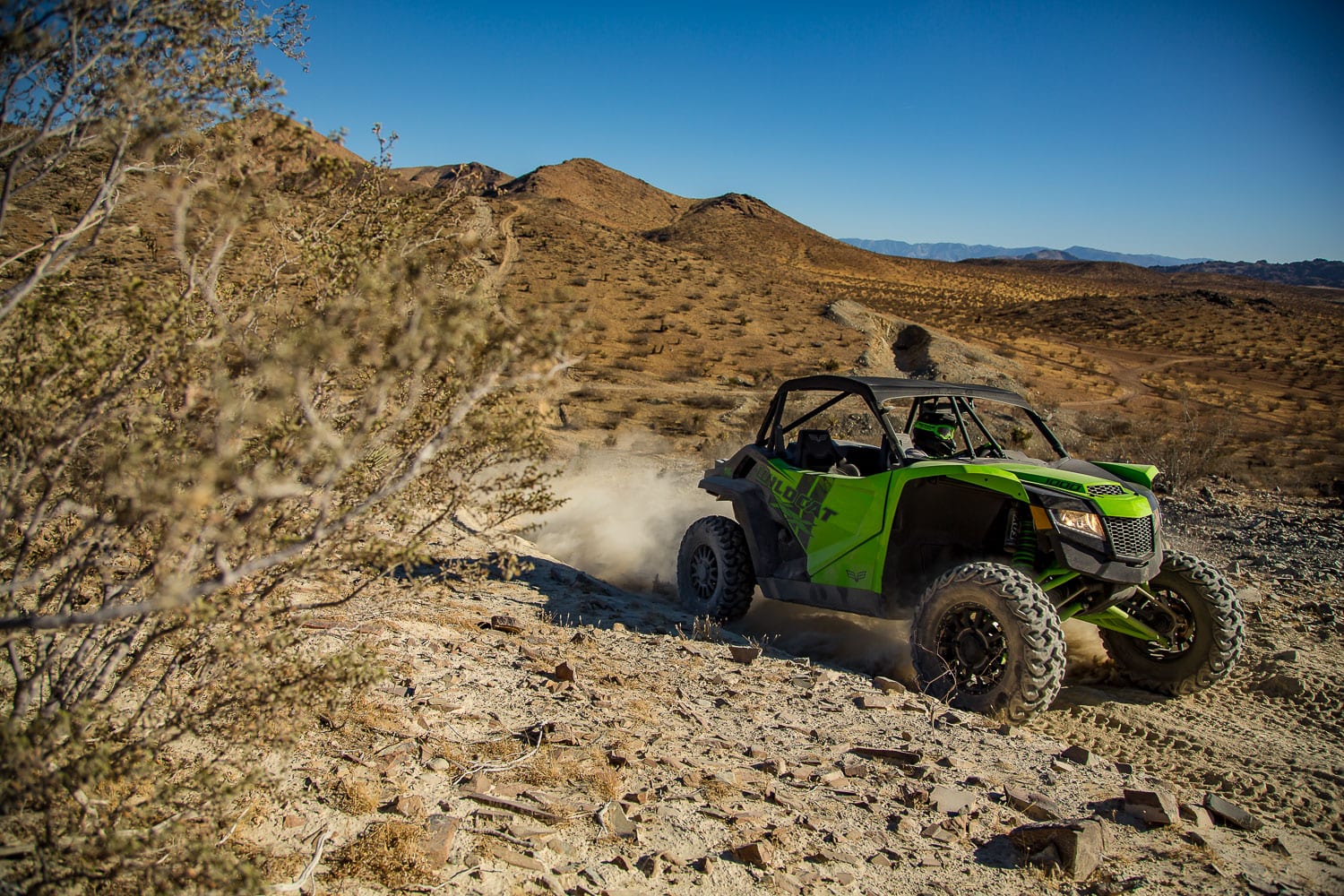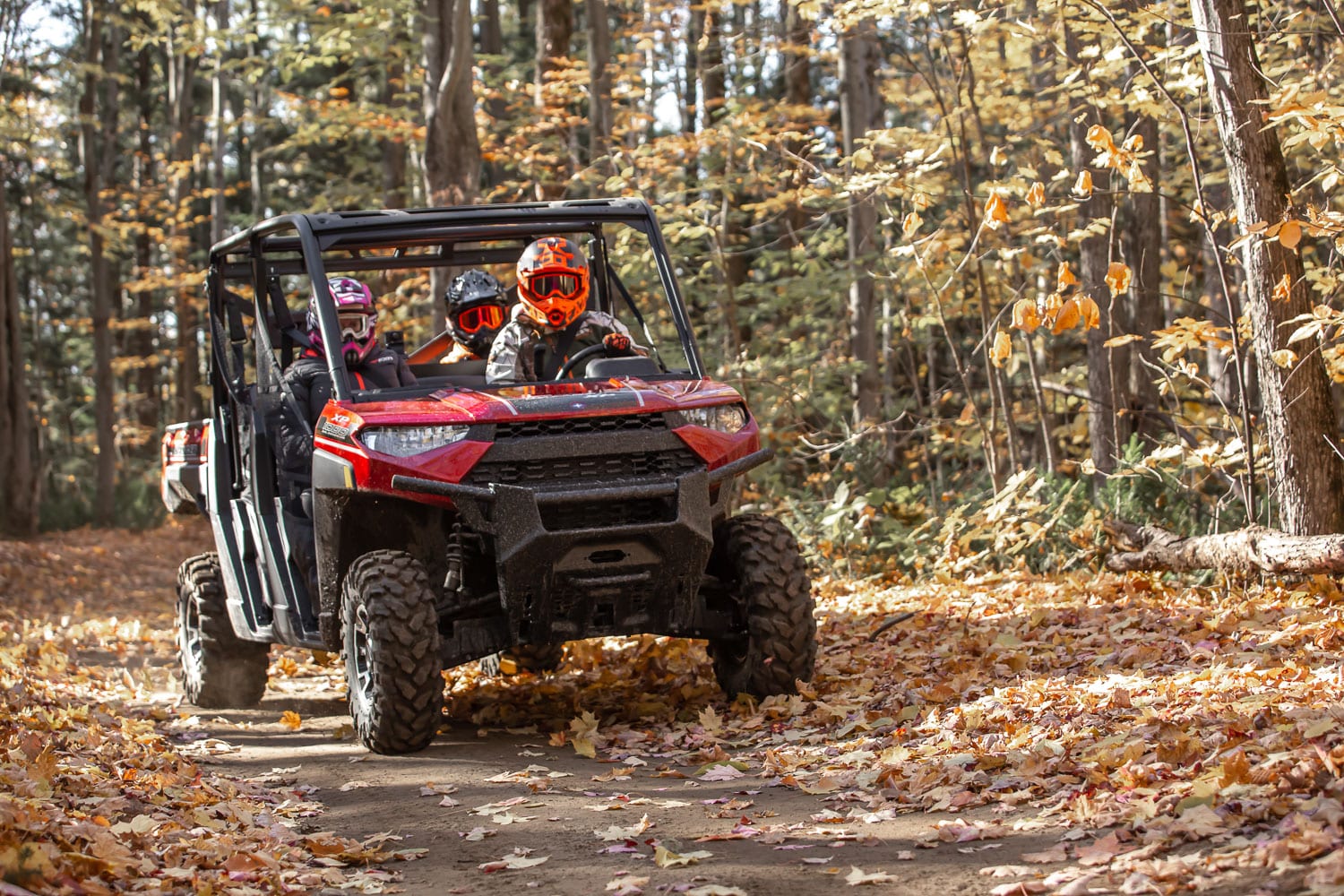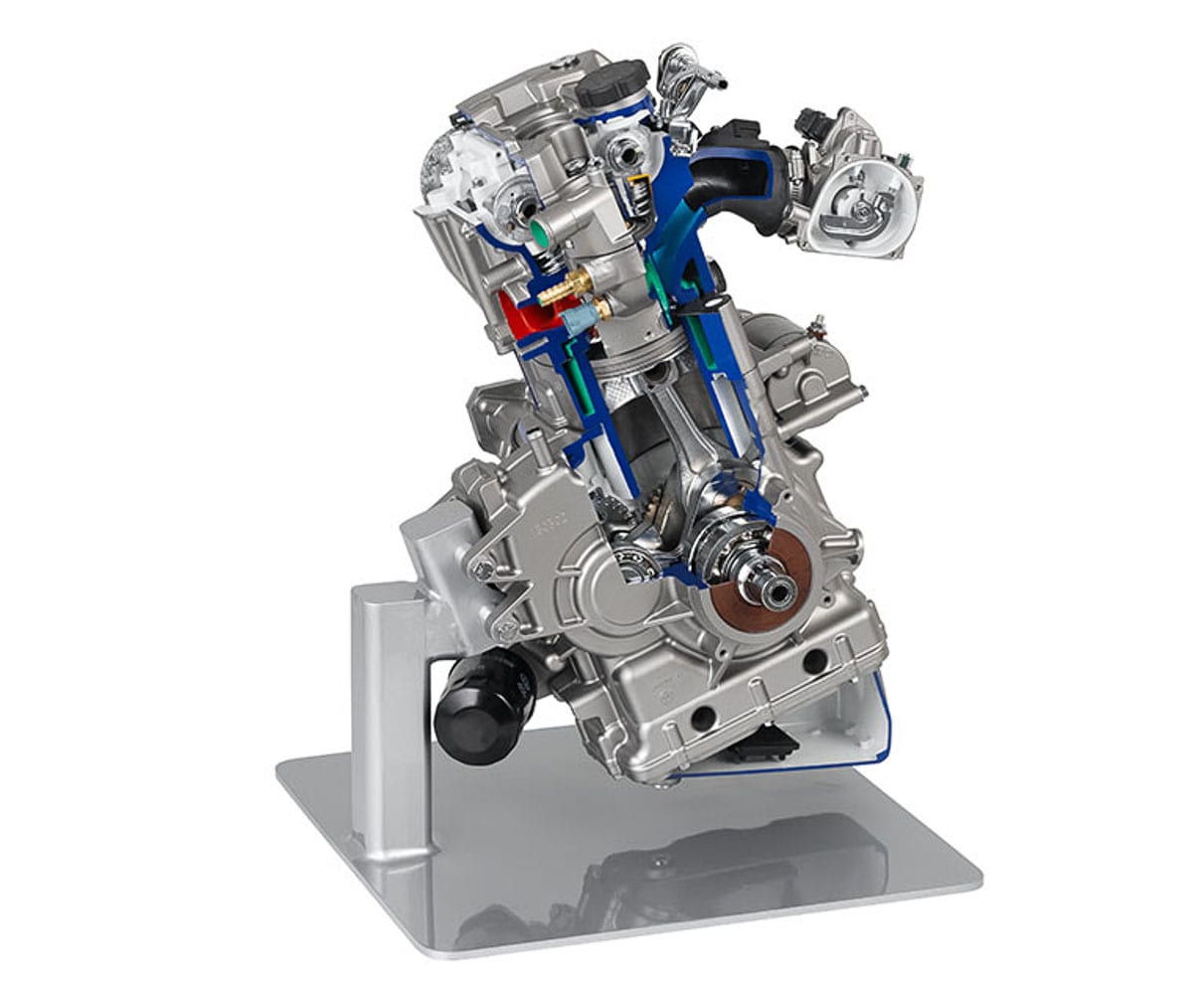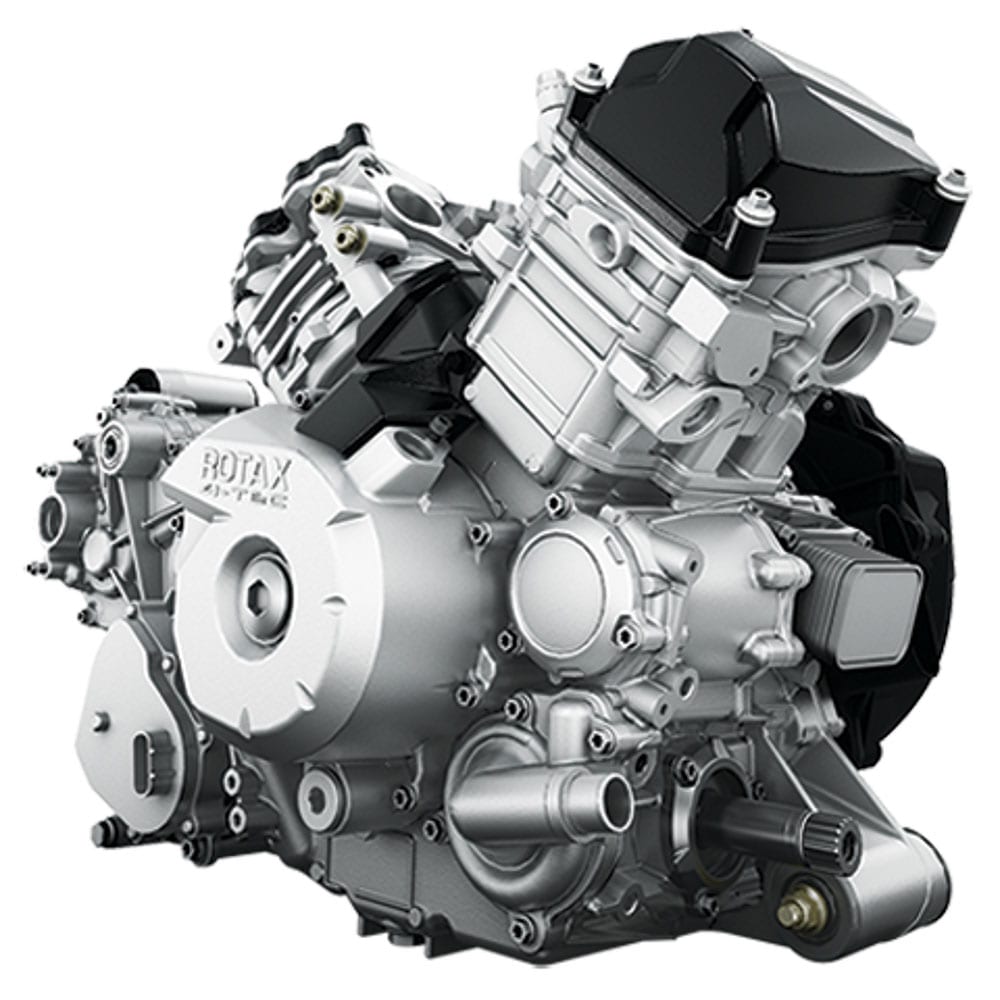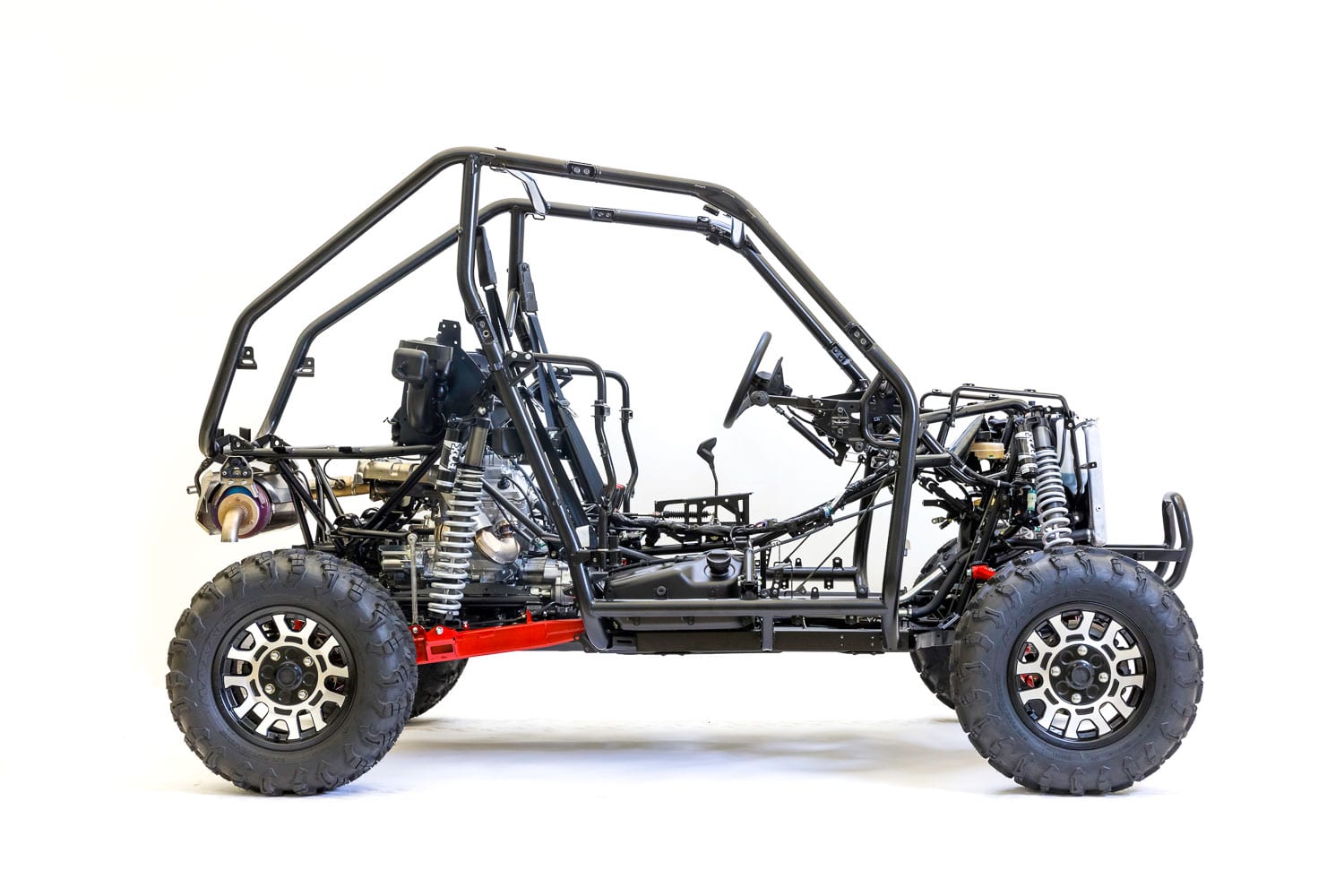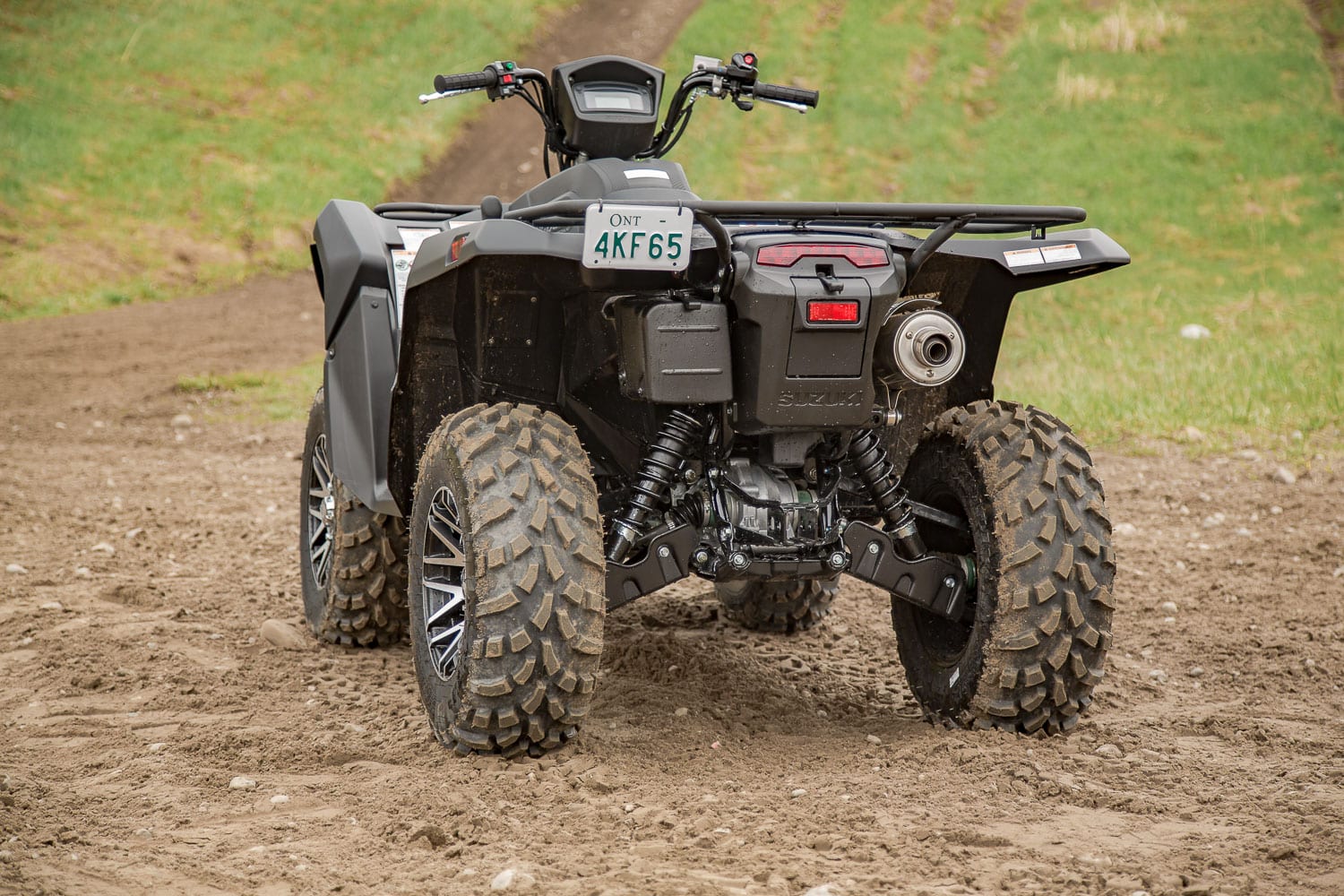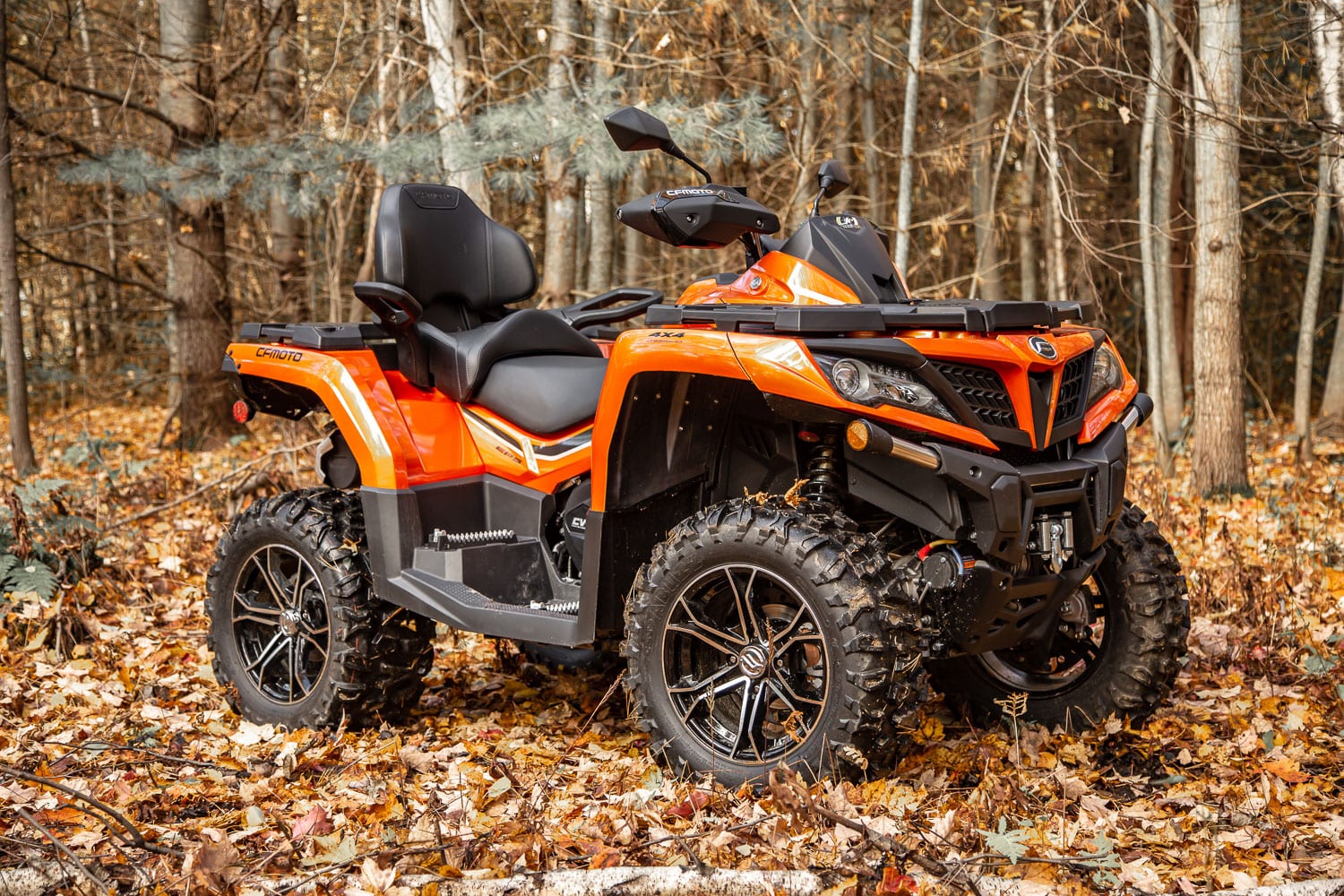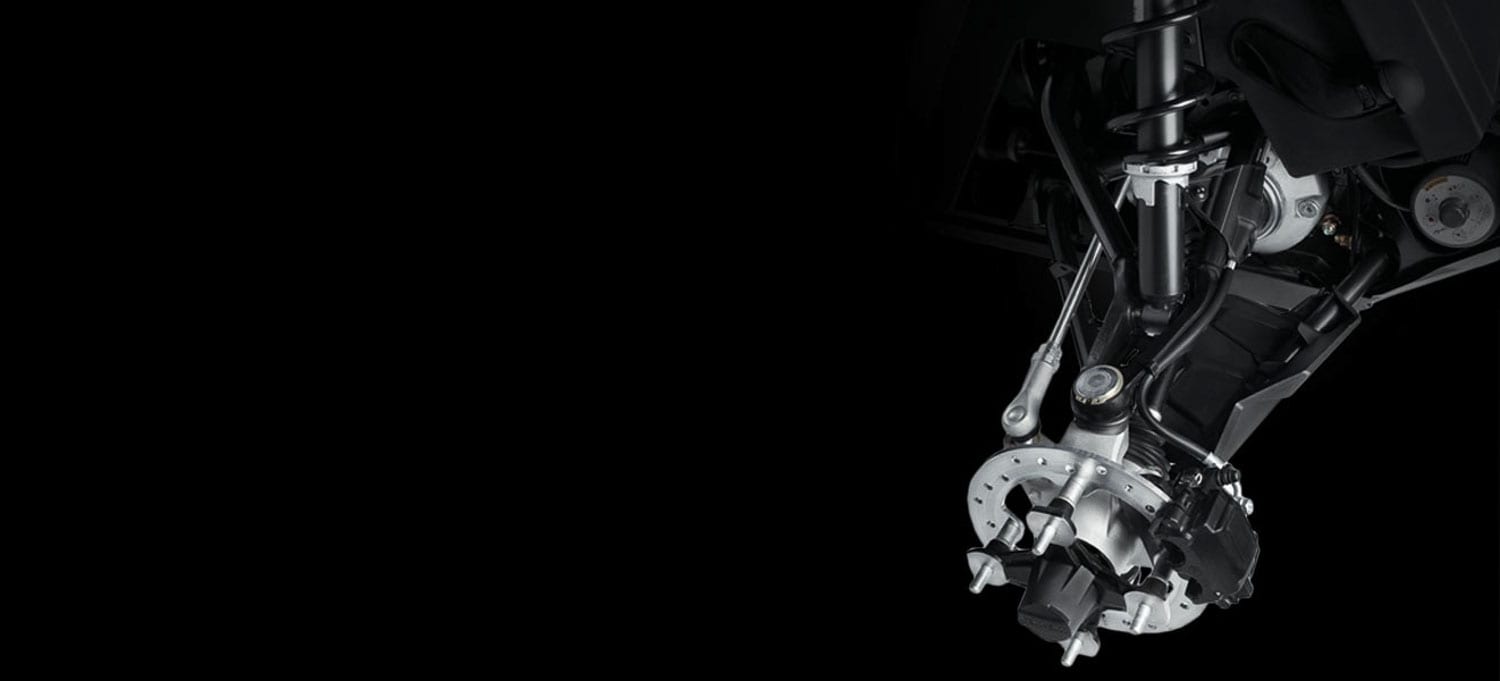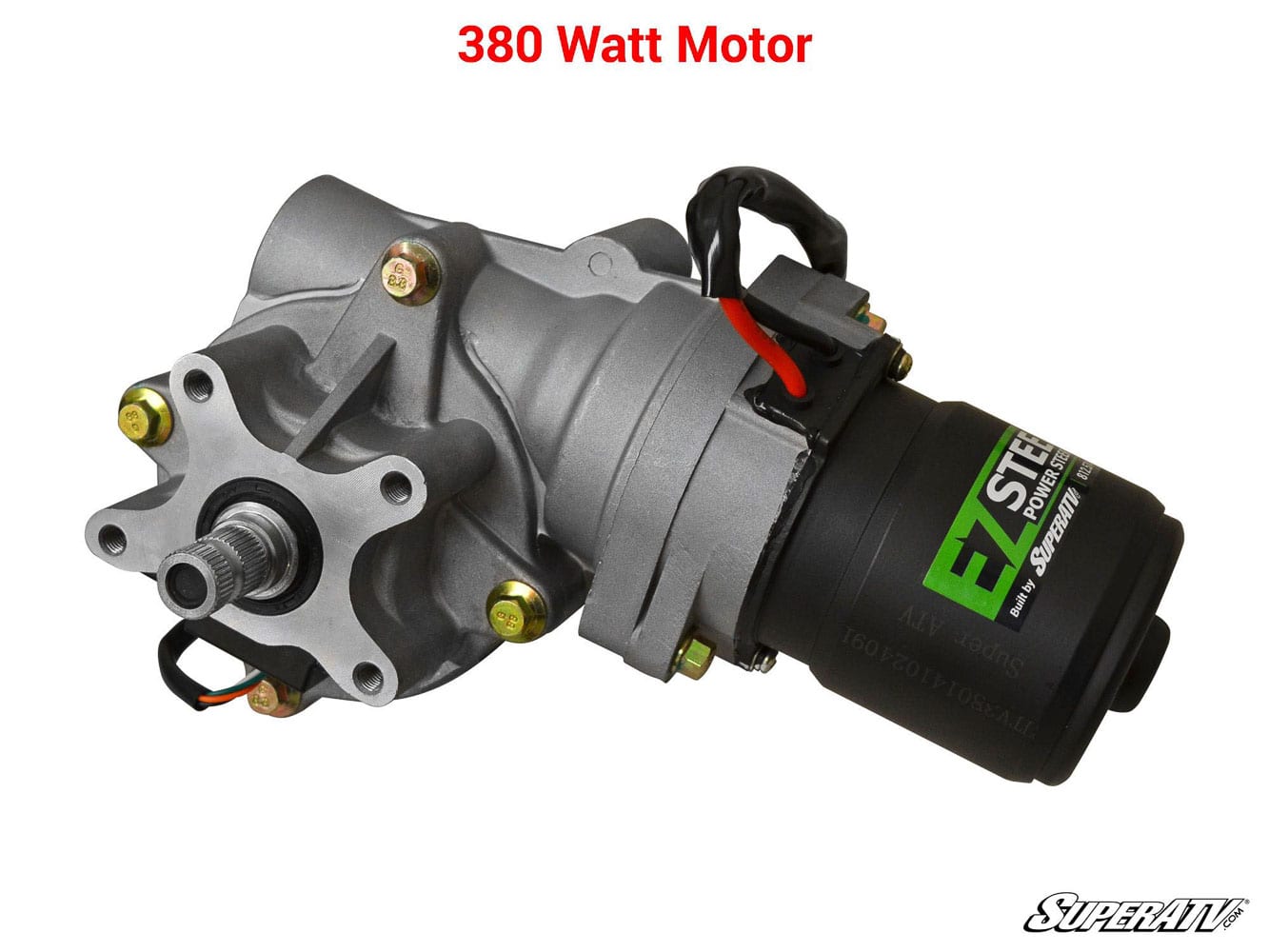That’s it, you’ve made a decision. You’ve decided to invest in a quad or a side-by-side to fill your free time perhaps during your pending retirement or combine family activities in a sport that will allow you to spend time together outside of the whirlwind of modern life. However, after thinking about it, you believe that this machine could also be used to do maintenance jobs in the woods. So many needs and wishes to reconcile simultaneously in a single vehicle make it difficult to choose.
The ORV industry’s products were more numerous than ever before in terms of diversity to fulfill the wishes of potential buyers. It’s now possible for you to buy the perfect vehicle based on the uses and the needs that you’ve identified. However, the vast diversity of options makes it difficult to choose the final model. Therefore, we’ll try to illuminate the points that you will have to consider, in this context, when buying an ATV or side-by-side.
Budget
The purchase of an ATV is big investment and should not be taken lightly. Since today’s machines are generally very durable, you’ll have it for several years. The amount of money available is, as in all areas of life, usually one of the most limiting factors when trying to realize a dream. Buying a quad is no exception, and it’s the first criterion that needs to be established before buying one.
Buying a quad is often a bit emotional, as the vehicle will be your toy, and you want it to be the most beautiful and best equipped one possible. It’s easy to get carried away by the whirlwind of “as long as we’re here” at the dealer’s and to sign the purchase contract for a vehicle that will be thousands of dollars more than initially planned. From that moment on, you‘ll like this vehicle a lot less, as it puts too much pressure on your overall family budget.
The best way to avoid getting carried away is to prepare a buying budget. You can even prepare the desirable budget that you’ll reveal to the seller, and an ultimate budget that you’ll keep for yourself during the negotiations. Stick to it, though.
Quad bike or ATV?
What a strange name to differentiate quads from side-by-sides! These are the new names that lawmakers wrote in the Act respecting off-highway vehicles to designate them. The quad bike is the traditional quad that is straddled and driven using handlebars. The ATV is defined as any quad equipped with one or more seats, a steering wheel, pedals, and a protective structure, and all the wheels are driving wheels. In addition, lawmakers anticipated limiting the net mass to 450 kg in the case of a single-seat ATV and 750 kg in the case of a multi-seat ATV. So, that’s it for the new words.
For a long time, ATVs were primarily designed for work, with wide, flat bench seats, rudimentary suspensions, and a low top speed. Then, at the beginning of the decade, more playful versions appeared, like the RZR and the now defunct Yamaha Rhino.
ATVs got bigger and heavier than quad bikes, and the manufacturers produced machines with large, powerful engines, suspensions that outdid each other in terms of effectiveness, and other luxury functions. In addition, the market offers four—even 6—seaters that may tempt parents who dream of making this a family activity.
It’s clear that the side-by-sides have an advantage in terms of cargo capacity thanks to their larger cargo bed and the number of passengers that can sit in it. Your companion will also be able to appreciate sitting beside you and having a front-row seat to view the landscape. The buyer may also prefer a driving experience that more closely resembles that of a car.
On the other hand, side-by-sides are more expensive to buy, as there’s very little in the way of equipment on the standard version. If you’re thinking of installing a winch, a roof, a windshield, a set of sealed doors and a watertight box in the cargo bed of a mid-range machine, you’ll have to do your utmost to stay under $20,000, including taxes. You may also have to add a bigger trailer that’s capable of transporting your vehicle, as the 4 ft. x 8 ft. trailer will no longer be big enough. Lastly, can your family vehicle pull more than 2,200 lbs.?
The quad bike, or market has changed over the last decade. The vehicles are offered with a displacement between 300ccs and 1,000ccs, plush suspension and power steering. You’ll always find entry-level vehicles, but also vehicles that are outfitted like a Gold Wing of the trails, or machines that specialize in a particular activity with their tilting cargo bed or an specific activity, such as the conquest of a bottomless quagmire.
The table below shows the main pros and cons of ATVs and quad bikes.
Comparing quad bikes and ATVs:
Quad Bike:
Pros:
– Less expensive to buy
– Smaller footprint and lower weight
– Very diverse
– Drives more like a motorcycle (personal preference)
Cons:
– The number of possible passengers is limited to 2
– Less able to transport cargo
Side-by-side
Pros:
– More room for passengers
– Bigger cargo capacity
– Ability to tow
– Super high-performance sports
– Variety of models offered
– Passengers sit side-by-side (personal preference)
– Best protection against inclement weather (roof, windshield, therefore $$$)
Cons:
– Prices climb very quickly
– Bigger footprint
– Related costs (trailer, larger towing vehicle)
– Less agile
– Cleaning
Categories of Quads
It’s difficult to rank a quad in a precise category. Although most of the ATV models offered could fit into one category, there are many models that overlap more than one classification because of some features. In fact, the lines blur, as almost all manufacturers have designed their utility models in such a way as to provide more performance to drivers who want to experience the full range of work and recreational capabilities of their vehicle. This is especially true with ATVs.
Nonetheless, let’s try to paint a picture of the vehicle categories that exist in the world of quads, starting with quad bikes, then ATVs.
Quad Bike Categories
Junior Models
ATVs for young people are essentially smaller and cheaper versions of adult ATVs. Almost all have been designed for recreational purposes, and a lot of parents buy them to share their passion with their offspring. Engine size varies from 50cc to 125cc.
There are a certain number of brands in this category that are not as well known that offer mini-vehicles, most of which are designed and built in Asian countries. It’s important to remember that, despite the very enticing selling price, the lower-quality metal used requires constant mechanical monitoring to avoid risking a child’s safety. Many incidents have been reported on social media, for example, ball joints that have separated due to excessive wear and tear.
Entry-Level Bike Quads
The purpose of this class is twofold : To offer an attractive product at the best price possible for hardened quad enthusiasts, and to offer intermediary models to young people who will advance in age and ability. For the first, think of the Polaris Sportsman 570, and for young people, the Kawasaki Brute Force 300.
Some manufacturers are adopting the strategy of taking an older-generation model and streamlining the equipment to the max to offer an unbeatable price. Or stripping down a current model to its simplest form. In this case, think of the Textron Off Road Alterra VLX 700, or the standard Yamaha Kodiak 700.
These quads were designed to be easy to drive. Thanks to their more docile nature and engines than the average, they’re an excellent starting point for novices just starting to ride a quad, or for those looking for a good machine for a budget price.
Utility Quads
By definition, utility ATVs are primarily designed for heavy-duty work, like transporting goods, with rugged racks or a rear cargo bed, or the possibility of towing a trailer or a farm implement. This is why these vehicles have become so popular among farmers.
Some industries, outdoor outfitters and public-utility maintenance personnel also use this type of ATV. They were quickly adopted by hunters, campers, and fishers who want to get to the remotest corners of the area. Among these quads designed for working, think of the Can-Am Outlander XT 6×6 or the Honda Foreman 500.
Initially, utility quads had the look of a mastodon with their slow but powerful engines, a rudimentary suspension, and a 4×4 drive system to offer the best locomotion possible. Over the years, these vehicles became more sophisticated, faster and more comfortable when trail riding, in addition to competing in terms of ease of use, through such things as power steering or an adjustable suspension system. The Can-Am Outlander is a perfect example of this.
When things get tough in the mud, on rocks or in the snow, modern utility quads maintain their ability to clear obstacles, thanks, in particular, to their higher ground clearance and their efficient 4×4 traction.
Utility or Hybrid Quads
The hybrid class combines the obstacle-clearing capability of the utility quads thanks to their 4×4 system and the sport features of the purely sporty ATVs. Indeed, when looking under the plastic body, you’ll notice that the chassis is based on utility models with suspensions that are aimed more at performance, and power engines that only ask to show their stuff. In 2018, only the Can-Am Renegade and Polaris Scrambler represent this class.
Sport
The vehicles that fall into this class were built with two objectives in mind: Have fun or compete. Sport ATVs are typically equipped with a powerful engine and ample suspension; they’re relatively lighter and offer excellent handling on the track and the trail.
Most sport quads count on a 5-speed transmission and manual clutch. Even if it’s harder to drive than automatic models, in the long run, the driver learns to maintain the engine within its optimal performance range to take off faster after clearing an obstacle.
This category almost disappeared a few years ago, and only Yamaha still sells its Raptor 700 and YFZ 450R. You’ll be able to find a large selection of options in the used vehicle market. Remember that the 450 is a high-performance engine, however, since it was designed for competing, these quads will require diligent and more frequent maintenance.
Two-Seaters
Two-seater quads appeared on the market in 2002. Bombardier, now Can-Am, launched this type of ATV with its Traxter Maxx. Then, Arctic Cat and Polaris quickly followed suit. Now, CF Moto also offers two-seater models.
These quads have a slightly longer wheelbase, which guarantees more stability when climbing steep slopes. Moreover, the additional room on the chassis allows the rear seat to be in front of the axle, which offers the passenger more comfort. The passenger generally sits on a raised seat with a set of grips and footrests. The best part of these machines is that it allows you to legally and safely ride with a passenger.
Mud Quads
Mud quads are factory-equipped with features that facilitate riding in deep mud, such as 30-inch specialized tires, a radiator relocated under the hood, a powerful engine, and an oversized bumper. These vehicles look like a war machine, ready to face any situation, which is more or less the case. Riding one of these quads is a little like riding on a raised F-250. It whips up the testosterone. The forerunner in this category is the Arctic Cat Mud Pro, which appeared in 2008. It has been joined by the Polaris Sportsman High Lifter and the Can-Am Outlander XMR.
Side-By-Side Categories
Utility
These vehicles were the first ATVs to appear on the market and were designed mostly for working and agriculture. They are rather slow, but their ability to transport and tow cargo is impressive. The tilting cargo bed is sturdy and can withstand the worst treatment. The cabin is often equipped with full-size bench seats with largely square seats, and there’s more headroom for taller drivers. This category includes the Kawasaki Mule, which was the very first production side-by-side as we know them today, and the Polaris Ranger.
Recreational
As users began to prefer to drive side-by-sides for trail riding, manufacturers started to create vehicles aimed more at the recreational aspect of the activity, long rides, comfort, and road handling. This category includes more than half of the models offered on the market. As new models were released at the beginning of the decade, there were machines of all sizes, including up to 64 inches. Some were oversized and, as such, exceeded the net mass of 750 kg, which suddenly put them in legal limbo in Quebec. The precursors in this class like the Polaris RZR 800, which became the RZR 900, played a significant role. The Yamaha Rhino, which has since been replaced by the Wolverine, invented the category.
Some U.S. jurisdictions restrict the width of an side-by-side to 50 inches. Because of this, we’ve seen a sub-category of ATVs referred to as Trail, which often have the same interior but a different suspension to fit within the 50-inch width restriction. The first ATV in this sub-category was the Textron Off Road Wildcat Trail, followed closely by a Polaris RZR entry. The most recent player in this niche is the Can-Am Maverick Trail.
Sport
The sport side-by-side models initially focused on performance and often reached the maximum displacement of 1,000cc. They are equipped with adjusted bucket seats, a narrower, more stylish cabin, wide suspension arms, more suspension travel, and the smallest possible cargo bed. These vehicles are capable of remarkable performance and will thrill most budding rally drivers. Since Arctic Cat opened the door with the Wildcat 1000, all the manufacturers want to have a “sport” model in their stables. For example, Can-Am offered the Maverick and Polaris the RZR 1000.
Super Sport
The super-sport models are technological windows of the manufacturers who want to show their know-how and, in the case of the two most prolific, want to have the last word when it comes to power. These vehicles are not for everyone; few drivers have the skills required to extract the quintessence from these thoroughbreds without heading right off the road. Yamaha is following its path in this limited category with the XYZ1000R SS and its 5-speed, Genesis engine. At Can-Am and Polaris, the designers have grafted a turbo onto the engines of their Maverick (131 HP) and RZR 1000 (168 HP), respectively. Next, Can-Am upped the ante by introducing the incredible Maverick X3 with its 24 inches of suspension travel, 72-inch wide gauge, and the 172 HP that its engine can deploy. Clearly, these machines belong on the sand dunes of Glamis or in the mythical test of Baja 1000; they don’t belong on trails.
Will this level off? It seems not. The threat to the supremacy of the Maverick X3 could well come from the electric side. Indeed, the Nikola NZT UTV, currently on the horizon, could take a bite out of the X3. Priced within the range of US$28,000 to US$ 62,000, the base version of this monster deploys 266 HP with a range of 144 km, but can produce up to 590 HP of power, 722 lbs. of torque, and a range of 240 km. The time to accelerate from 0 to 60 mph? Just 3.5 seconds.
Multi-seat
It was very tempting to offer extended versions with a second row of seats, and manufacturers tried. Initially offered with a multi-seat cabin for workers, the sport ATVs quickly appeared on the scene offering a playful alternative to ride in groups of friends or, more simply, as a family.
If you’re thinking of bringing along your children, take the time to check the requirements of the Act regarding young people sitting in these vehicles. Indeed, when seated and strapped in with the vehicle’s safety belt, your child must be able to reach and hang on tightly to the hand hold designed for his seat. No restraint system or booster cushion can be used to compensate if he can’t otherwise hold the hand hold.
All manufacturers offer multi-seat cabins in their range.
Mechanical Features of the Vehicles
This section paints a general picture of the primary mechanical features of the vehicles and their usefulness.
Electronic Fuel Injection
Most ATVs now have electronic fuel injection (EFI), although it is not as developed than the systems installed in cars. The main advantage of the EFI is the elimination of the manual choke. This ensures the best start-up when it’s cold outside.
Single or Twin Cylinders
Single-cylinder engines have powered most 4-wheel vehicles for many years. They’re simple, offer a lot of torque, and respond perfectly to an ATV’s need to move. In an effort to increase performance, two-cylinder ATVs appeared in a twin or an in-line configuration. If people think of the first ATV that introduced a two-cylinder engine, most think of the Kawasaki Prairie KVF650, introduced in 2002. However, it was the hot-tempered and legendary Yamaha Banshee 350cc, with its 2-stroke engine, that was the first back in 1987.
The advantage of a two-cylinder engine is that it provides more power than a single cylinder with the same displacement, but it provides less torque. However, two-cylinder engines are considerably bigger and heavier.
The biggest quads often come with two-cylinder engines, but they’re more common in heavier ATVs.
Turbos
As in cars, turbos increase the air and fuel mixture that enters into the piston and increase the available power. They’re offered on higher performance side-by-sides. Although more power is attractive, the additional complexity could lead to costly problems over the long run. Know what you’re getting in to
Types of Transmissions
Most machines sold today have fully automatic transmissions with continuously variable belts. This is a belt that turns between two variable pulleys that self-adjust to turn fast or to work at low speed according to the forces present in the system. The horror stories of belts that would fail excessively are now a thing of the past. They are all extremely reliable.
There are two major types of CVT transmissions: those that constantly mesh on the belt and those that release the belt. In the first case, it’s the oil-bathed internal centrifugal clutch that disengages the transmission’s driving force. Therefore, the belt is always tensioned and can’t slip. Yamaha’s Ultramatic system or Suzuki’s Quadmatic system use this design. The other type is the primary pulley that opens and releases the tension on the belt, and the pulley runs idle. Purists will say that the belt can slip over the pulley plates, but that’s an exaggeration. Nonetheless, it is true that it will have to be maintained regularly to ensure that it’s clean and that the moveable parts work optimally. Lastly, regardless of the CVT transmission, it is significantly preferable to use the lower range to drive at a very low speed or to pull heavy loads.
Some manufacturers took a different tack with their automatic transmissions by designing complex, internal gear systems that are heavier and more expensive to manufacture. They are sturdier and not likely to flood when moving through deep water. A 3-speed automotive-type automatic transmission can even be found on Honda’s Rincon. Another type that is different, but extremely effective is Honda’s DCT system that uses dual clutches that automatically shifts mechanical gears. These systems allow you to drive in automatic mode, or allows you the option to shift the gears yourself with a digital selector. Very cool stuff.
Just like in the world of cars, manual transmissions are disappearing and are confined to sportier vehicles. A manual clutch is used to shift between 5- or 6-speeds.
Rear Suspension on Quads
Quad rear suspension systems have one of two configurations: the rigid axle with swing arm and single shock, or the independent, single- or double-wishbone. For their part, side-by-sides are mostly equipped with independent suspensions that are calibrated differently according to use: work and heavy loads, comfort and large travel.
Sport quads have rigid suspensions, as they’re lighter and provide greater stability when cornering. They’re also preferred for ATVs designed for working, as they can take a heavier load without the rear of the vehicle collapsing. They’re also less expensive and can be found on entry-level vehicles and quads for kids.
In the case of the independent suspension, each rear wheel moves independently of the other. The first advantage is the superior comfort when trail riding because, in addition to the independent movement, the suspension travel is bigger. The ground clearance is higher, as the axle doesn’t have to be straight. The suspension arms raise the ATV upwards. On rugged terrain, the ATV is easier to maintain stable, and there’s greater contact between the tires and the ground.
Disc and Drum Brakes
Today, almost no machine is equipped with drum brakes. Only entry-level ATVs still have them on the rear axle. Whatever you may think, these drums are effective enough to stop a mid-range ATV even if disc brakes are better. So, don’t turn up your nose at this technical solution. The disc brake took precedence over the drum brake, and there are usually two at the front and one at the back. Just as the rear differential allows the two wheels to be engaged at all times, this brake also acts on the two wheels.
4WD and Front Differential Systems
This is a topic that provokes a lot of discussion about their effectiveness among fans, especially those who are crazy about deep mud. While all ATVs, except sport ATVs, have a 4WD system, these differ widely as to how they work.
In the case of the basic system, the driver has a selector that allows him to activate or deactivate the front differential. This differential generally has limited slippage, i.e. the wheel that has the least traction will turn. Obviously, the ATV driver will not have optimal traction. To compensate, a lot of models can lock the front differential by way of a switch or a cable control. From that moment on, the four wheels are locked together and they rotate simultaneously. The driver will have to be very careful in the corners, as the ATV will try to continue along in a straight line. The driver will also notice that the steering wheel is a lot harder to turn.
To take advantage of both worlds, over the years Can-Am developed the Visco-Lok system, which detects the loss of traction in one of the two front wheels when the 4WD is engaged. When there’s a difference in the rotational speed, the differential locks itself by transferring the power equally between the two wheels during the time needed to get out of a bad spot. Next, it deactivates itself and returns to the limited slippage mode. All this happens without the driver’s involvement and it prevents him from decelerating once the system has activated itself.
Polaris is a case apart with its “on-demand AWD” traction control system. It’s not the driver who controls the 2WD/4WD switch, but rather the Polaris system that controls the 4×4 traction. In fact, even if the switch is set to the 4×4 position, the ATV will continue to advance using two-wheel drive. When the system detects a 20-percent difference in rotational speed between the front and the rear wheels caused by slipping, the AWD system directs the power to the front wheels by way of the Haldex differential, and the ATV becomes a 4X4 (the two front wheels are locked). As soon as the demand stops, the AWD releases, and the ATV returns to the two-wheel mode. On slippery surfaces or steep inclines, the engine brake will lock the wheels when the driver inadvertently decelerates too quickly. This is a feature that the driver will learn to manage and even enjoy using.
Power Steering
Power steering appeared over the years as ATV models got bigger and heavier. Power steering units are electric and adds about $1,000 to the cost. It generally adapts to speed, but some manufacturers offer more levels of adjustment based on the user’s preference. The degree of comfort is appreciable, as you’ll no longer feel the jolts and bumps in the handlebars the more kilometres you drive during the day, thereby reducing fatigue in the arms and shoulders. It goes without saying that a 4-passenger side-by-side benefit hugely from this option and most all have it. If you have delicate shoulders, you should seriously consider this option.
This is just some of the information on what to research in this guide, on the Internet, and at the dealer’s. Happy shopping!


